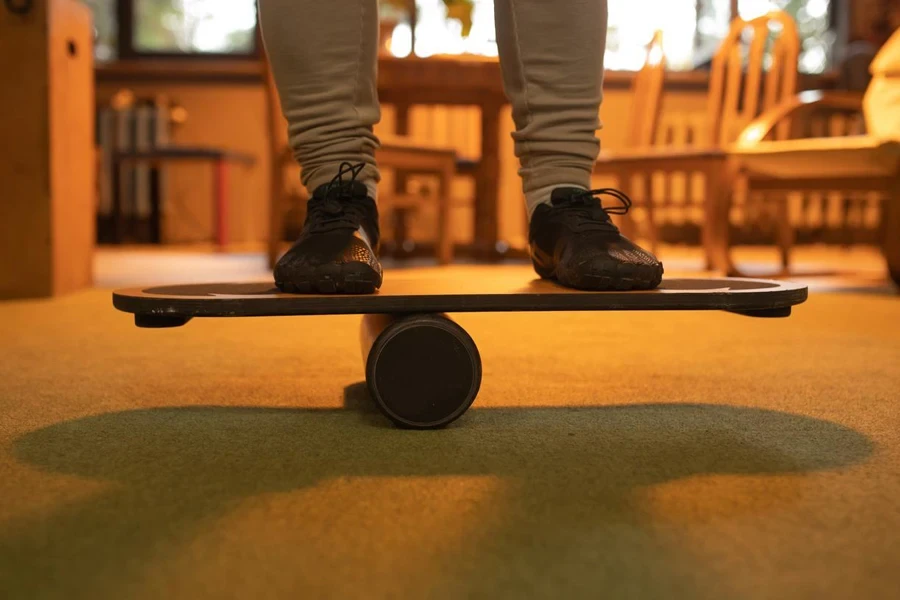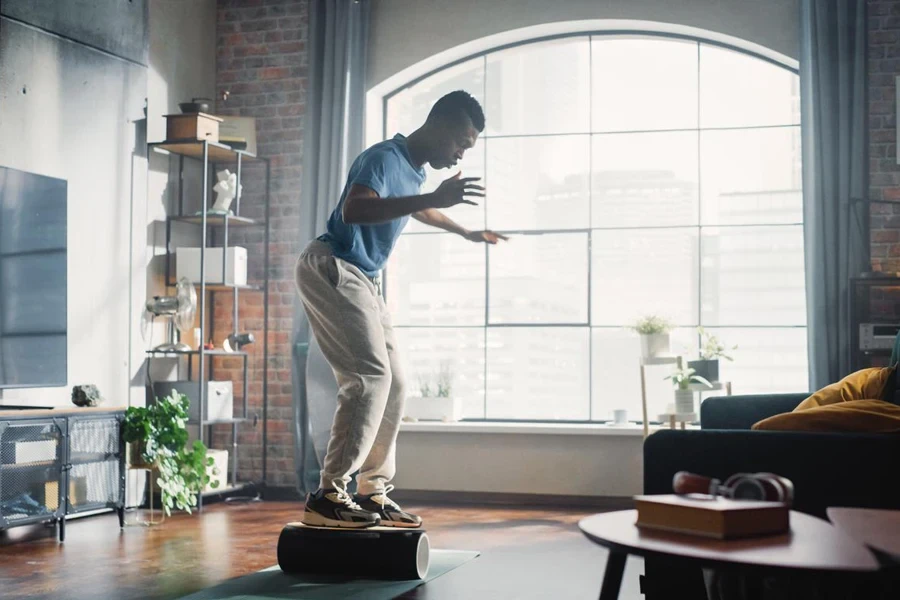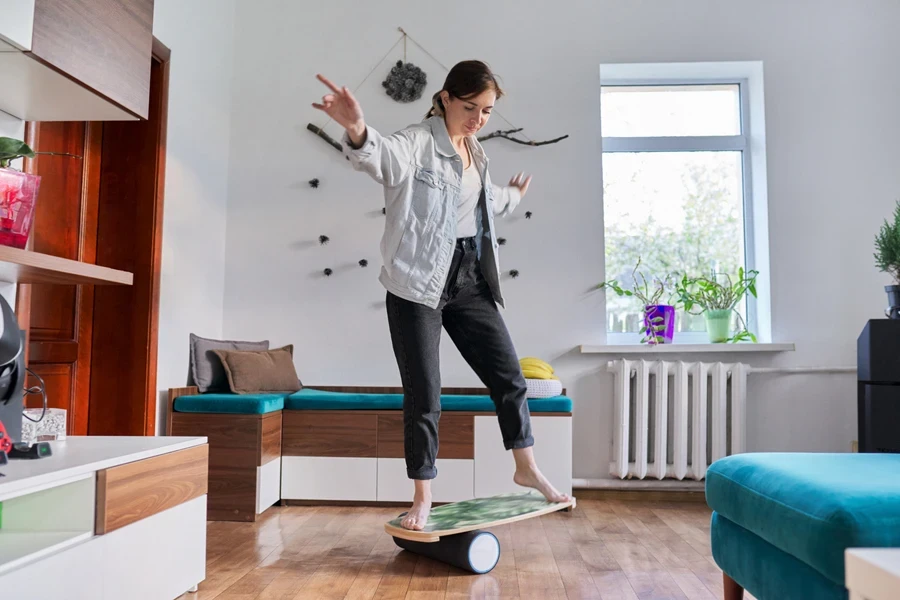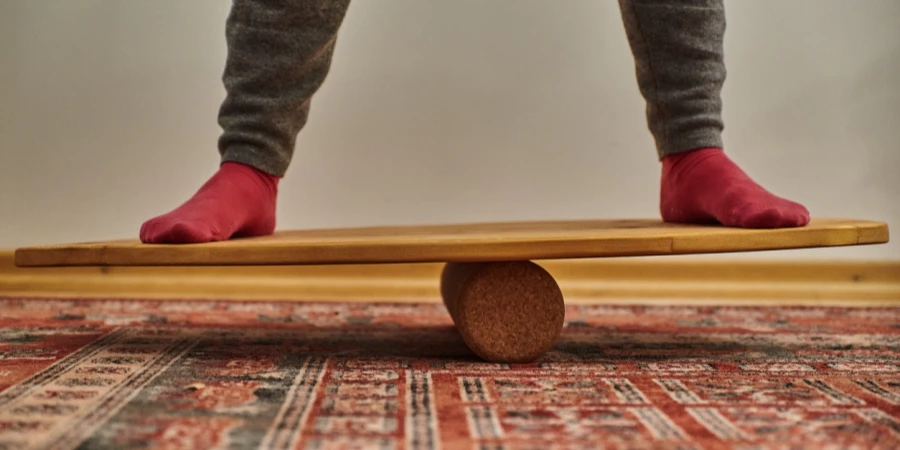Table of Contents
1. Introduction
2. Explore the balance board spectrum: Types and applications
3. Market insights and the future of balance boards in 2025
4. Key factors to ensure the perfect balance board choice
5. Leading balance board models and their winning features
6. Conclusion
Introduction
In 2025, deciding on the right balance board is more than picking workout gear; it’s about boosting performance, refining balance skills, and meeting training requirements. Be it for enhancing athletic abilities, supporting recovery from injuries, or even maintaining activity levels while working long hours at a standing desk; balance boards bring various advantages. Various options are available from entry-level models suitable for novices to high-end options designed for experienced athletes, which can greatly influence your overall physical health and efficiency. When exploring an array of options in the market landscape for balance boards, it is essential to grasp each type’s features and benefits before making a well-considered choice.
Explore the balance board spectrum: Types and applications

Wobble boards: The versatile tool for every fitness journey
The wobble boards are known for their versatility as balance training tools that are popular today. They feature a central pivot point that enables movement in all directions, making them beneficial for improving balance, core strength, and stability. Wobble boards allow individuals who enjoy fitness to incorporate balance training into workout routines, such as bodyweight exercises, yoga sessions, and even during leisure activities like watching television. In addition, wobble boards are commonly utilized in rehabilitation environments to aid in controlled movement needed for recuperating from conditions such as ankle sprains or knee operations. The flexibility of adjusting difficulty levels through foot positioning adjustments or adding weights enhances the versatility of boards, making them a popular choice for both home workouts and professional physiotherapy facilities.
Rocker boards: The go-to choice for precision training
Rocker boards are an option for people healing from limb injuries or just starting with balance training; they offer a safe and practical method to develop core strength and balance. They feature a flat platform with a single-axis fulcrum, typically allowing for movement in only one direction—side to side or front to back. This controlled movement makes rocker boards ideal for beginners and those needing to focus on specific balance-related exercises without the complexity of multi-directional instability. Rocker boards provide a safe and manageable way to build foundational strength and stability for individuals recovering from lower limb injuries or those new to balance training.
Roller boards: Elevating performance in sports and agility
Roller boards elevate balance training to a standard for athletes and fitness fans seeking a greater challenge. They are equipped with a roller beneath a board that creates an unsteady surface, necessitating continuous adjustments and control. The advanced nature of roller boards makes them ideal for improving performance in sports, as they prioritize agility, intense reflexes, and solid core stability. Engaging in pursuits such as surfing or snowboarding can be enhanced by the training roller boards offer.
Market insights and the future of balance boards in 2025

Currently, experts estimate the value of the balance board market to be around US $500 million and project it to reach about US $750 million by 2028; they predict this growth will occur at a growth rate of roughly 6.7% from 2023 to 2028.
The rise of balance boards: A booming market
The market for balance boards has experienced expansion in the years due to the rising enthusiasm for overall fitness and well-being among individuals. Notably, users emphasize incorporating balance training into their workout regimens, resulting in a need for balance boards across different age groups. This shift is especially evident among professionals looking to enhance their well-being while balancing work responsibilities at home or in office settings. According to reports, balance boards have become a feature in home gyms and physical therapy centers in the fitness industry sector, and they have found their way into office spaces. This fuels a market that seems to be constantly moving forward with no signs of stopping soon.
Innovation at the forefront: What’s new in balance boards
Innovation has played a role in developing balance boards as manufacturers always bring in features and styles to keep up with the evolving market needs. One notable progress is integrating technology into these boards. Some versions come with sensors that monitor and assess movements to give users feedback on their actions. This method that relies on data doesn’t just improve how users interact with the system and enables efficient training sessions in areas like rehabilitation and professional sports training.
Shifting preferences: What today’s consumers are looking for
The demands of consumers in the balance board industry are changing as they gravitate towards products that provide more than the essentials. Customers seek items that can fulfill roles, such as integrating balance workouts with strength training or serving as a dual-purpose tool for exercise and professional tasks. This shift is notably reflected in the popularity of balance boards tailored for use with standing desks. They enable individuals to stay dynamic during work sessions and enhance their stance while combating tiredness.
Key factors to ensure the perfect balance board choice

Matching purpose with performance: What to consider
Choosing the right balance board starts with knowing what it’s supposed to accomplish. A wobble board might be the way to go if you’re looking for an all-around fitness tool to enhance core strength and balance while providing flexibility in your workout routines, such as yoga or strength training exercises. On the other hand, if you’re recovering from an injury and need a board that offers controlled movement in one direction, rocker boards could be a better fit for therapy purposes. This function enhances their safety and usability by enabling individuals to regain strength and stability without pushing themselves hard.
Built to last: Why material and durability matter
The choice of materials in making a balance board plays a role in determining its durability and performance levels. Setting up a balance board using high-density wood or sturdy plastics benefits the table. Wooden boards are favored for their solidity and connection to nature’s essence, making them suitable for personal and business applications. They are less prone to warping over time and can withstand loads, making them a reliable option for regular use. On the other hand, they generally weigh more and might need extra care to stay in top shape.
Getting the right fit: Size, weight, and adjustability
The success of a balance board is also influenced by selecting the dimensions and weight limit that match the user’s needs well. Adjustability plays a big role in ensuring a balanced board suits its intended user well. There are various sizes of balance boards. Larger boards generally provide greater stability and are best suited for beginners or those engaging in low-intensity exercises. On the other hand, smaller boards offer challenges and are preferred by advanced users seeking to increase the intensity of their workout sessions. The weight capacity is also crucial, as going beyond the recommended limit can compromise the board’s effectiveness and safety features.
Leading balance board models and their winning features

Bosu Ball: The multi-functional powerhouse
The Bosun Ball is known for its flexibility and high quality in the balance board industry. It is often seen as the top choice for versatile training equipment users can rely on for various workouts targeting balance improvement, strength, and flexibility enhancement exercises. Whether it is used for balancing workouts or advanced routines involving weights and resistance bands usage, the Bosun Ball showcases its ability to cater to different fitness levels effectively. Its build quality can reliably withstand weights of up to 350 pounds over time, regardless of whether used at home or in a work environment.
Yes4All Wooden Wobble Board: Affordable excellence
The Yes4All Wooden Wobble Board proves that you don’t always have to pay for quality equipment to balance training options. This affordable choice offers performance and durability without burning a hole in your pocket. Crafted from high-quality wood, this wobble board has a surface that prevents slipping and ensures safety while using it. Its compact design makes it perfect for use in home gyms or office settings.
StrongTek Anti-Fatigue Balance Board: The standing desk essential
In the workplace setting, where standing desks are gaining popularity by the day, the StrongTek Anti Fatigue Balance Board has become a must-have item for staying active and attentive during work hours. Setting itself apart from balance boards, this model is crafted to complement standing desks, offering a gentle yet impactful method to strengthen the core muscles and enhance posture while working. Its unique butterfly shape and textured surface provide comfort, enabling users to stand for a long time without feeling worn out.
Revbalance 101 v2: The athlete’s choice for peak performance
Athletes and individuals passionate about fitness who seek peak performance from their workout equipment gravitate toward the Revbalance 101 v2 as a premier option for enhancing agility and core strength through its design features, like the roller system that offers a demanding exercise experience.

Conclusion
Choosing the right balance board in 2025 involves knowing what you need it for whether to stay fit, recover from an injury, or enhance your work environment healthily. Various picks exist, like the adaptable Bosu Ball and the affordable Yes4All Wooden Wobble Board, that you can consider based on your specific needs and preferences. Focusing on aspects like the longevity of materials used and the flexibility in size and value for money ensures a choice that can cater to the needs of our evolving and wellness-focused world today.




